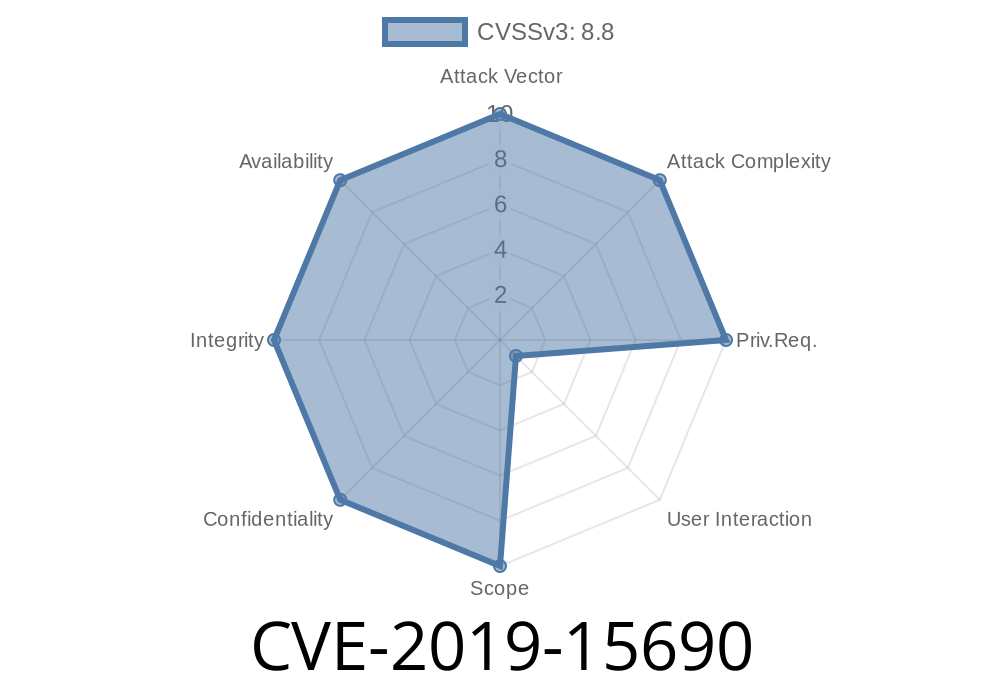LibVNCServer, an open-source library that implements VNC (Virtual Network Computing) functionality, is affected by a heap buffer overflow vulnerability. This vulnerability, designated as CVE-2019-15690, allows remote attackers to execute arbitrary code on affected systems. This post will delve into the details of this critical issue, discuss how it was triggered, and provide a code snippet with the affected parts.
Vulnerability Description
In the LibVNCServer .9.12 release and earlier, a heap buffer overflow is present within the HandleCursorShape() function in the libvncclient/cursor.c file. By sending cursor shapes with specifically crafted dimensions, a malicious actor could exploit this vulnerability, leading to remote code execution on the target system. The issue was discovered and reported by independent security researcher Evgenii Shatikov.
Code Snippet
Below is a snippet of the vulnerable code, which can be found within the HandleCursorShape() function in the libvncclient/cursor.c file.
int HandleCursorShape(rfbClient* client,int x,int y,int w,int h,int enc) {
size_t length;
size_t fb_width=client->framebufferWidth;
//... (code omitted for brevity)
/* Find encoding */
if(enc==rfbEncodingPointerPos) {
/* No pixel data to process */
client->cursorX = x;
client->cursorY = y;
return TRUE;
}
/* Calculate how many bytes were received */
length = cursor->width * cursor->height;
length = length * (client->format.bitsPerPixel/8);
//... (code omitted for brevity)
/* Read cursor pixel data */
if(!ReadFromRFBServer(client, cursor->buffer, length))
return FALSE;
}
Exploit Details
The vulnerability occurs in the HandleCursorShape() function when calculating the "length" value. An attacker crafts exaggerated cursor dimensions that, when processed by the HandleCursorShape() function, results in a heap buffer overflow. Exploiting this overflow, a malicious user could potentially execute arbitrary code remotely.
To achieve arbitrary code execution, an attacker would typically develop an exploit that triggers the vulnerability and then takes control of the server. By making use of a crafted RFB session and cursor shape, a malicious actor can exploit the vulnerability, initiate an overflow, and execute arbitrary code without the user's knowledge.
Links to Original References
1. LibVNCServer GitHub repository: https://github.com/LibVNC/libvncserver
2. CVE-2019-15690 entry on NIST NVD: https://nvd.nist.gov/vuln/detail/CVE-2019-15690
3. Vulnerability report by Evgenii Shatikov: https://github.com/LibVNC/libvncserver/issues/361
Conclusion
The heap buffer overflow vulnerability in LibVNCServer .9.12 and earlier poses a significant risk as it can lead to remote code execution. Organizations and individuals using the affected versions should upgrade immediately to avoid potential exploitation by attackers. Regular security audits and vulnerability assessments should also be conducted to identify and mitigate possible risks in software projects.
Timeline
Published on: 01/24/2025 18:15:27 UTC
